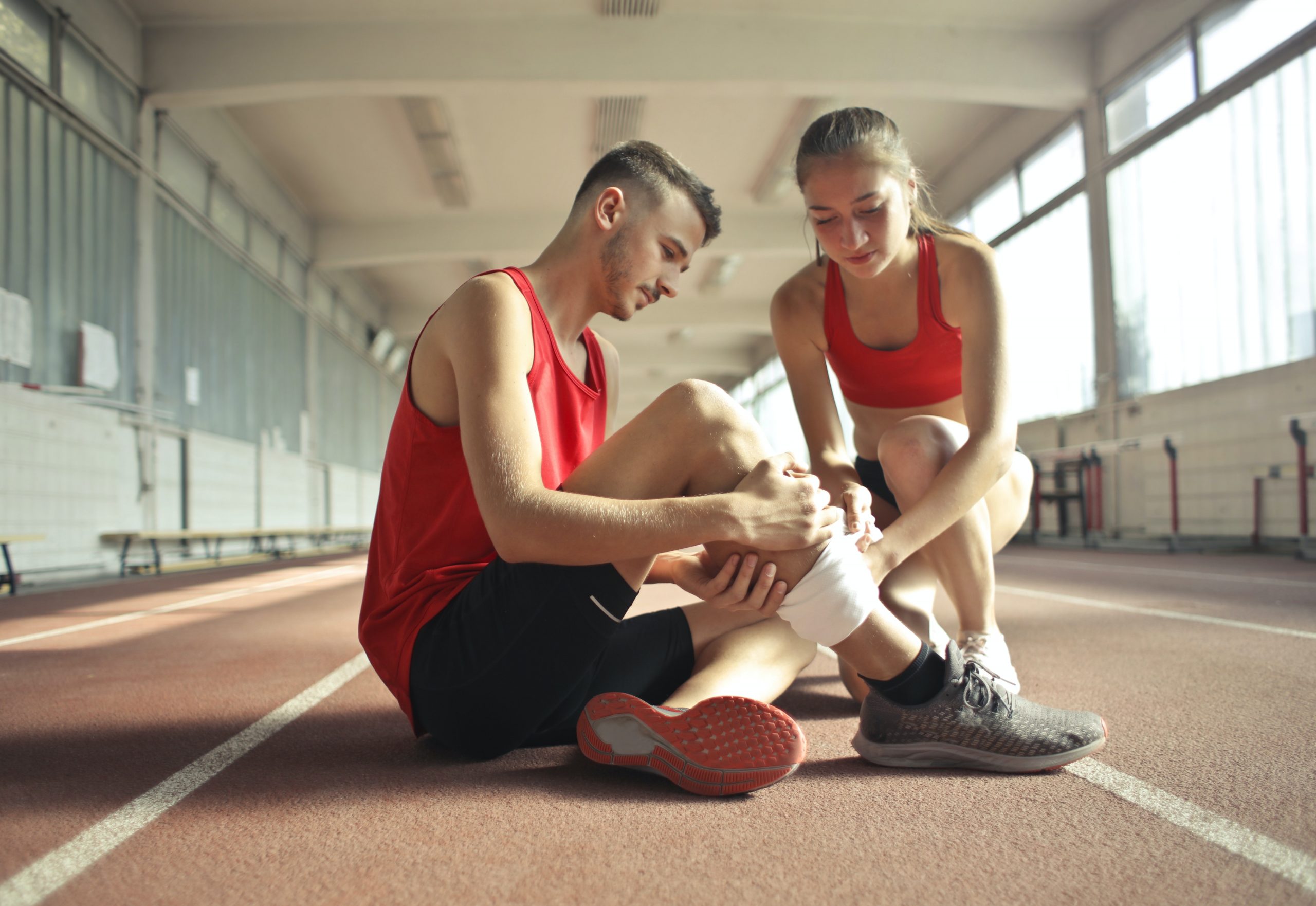8 common workout injuries and how to prevent them.
A workout injury can happen to anyone, regardless of fitness or gym experience. Below, we’ll look at the most common injuries and share tips for preventing them. If it’s too late for prevention, our osteopaths can help get you back to the gym.
Gym injuries often result from training that is too intense in volume and frequency, as well as from changes in form or technique due to fatigue or stress. Our osteopaths are trained to diagnose the cause of your pain and design an exercise program tailored to you as an individual.
Like all sports injuries, workout strains and sprains can turn from acute pain into a chronic condition without proper care and attention. If you experience pain while working out, it’s important to stop the activity immediately and seek help. The inflammation period of an acute musculoskeletal injury lasts several days, during which time it’s advisable to work with a health professional to support full recovery.
Knee pain
‘Runner’s knee’ doesn’t only affect runners! You’ll hear a creaking or crunching sound as you move your knee, which is often because the patella isn’t tracking your movement so well. Sometimes caused by weak hips and abductors, it’s worsened by muscle imbalances, as well as weightlifting when the knee isn’t correctly aligned.
Follow an exercise program that strengthens the hips and quadriceps. Make sure you’re not lifting weights that are too heavy and get advice from our osteopaths on proper alignment when working out.
Wrist strain
Your wrist is a complex joint, capable of high mobility. That complexity also means a greater degree of instability. Too many press-ups, or overuse of heavy barbells can cause muscle strain around the wrist.
Prevent wrist strain with a program that includes exercising the smaller muscles that stabilise the joint and use wrist rotation and wrist extensions in your exercise program.
Rotator Cuff injury
Your rotator cuff comprises four muscles that support the shoulder joint. The tendons here can be damaged by too many repetitive overhead movements, or movements that involve high shoulder mobility.
To prevent rotator cuff injury, get advice from our osteopaths on adjusting your posture – slouching will affect the whole shoulder joint. Follow a gym program that focuses on lighter weights and less repetitions.
Lower back pain
From that sudden twinge to a gentler tugging feeling in your lower back, you know when you’ve overdone a workout. The most common causes of lower back pain at the gym are deadlifts and squats while not maintaining proper form, though side bends and twists can also trigger pain.
Check your form before lifting weights – get advice if you’re unsure. Always warm up and stretch gently before working out, following a routine that’s designed for you.
Sprained ankle
Treadmill running can cause a sprained ankle if you misplace your feet on the belt. The ankle, like the wrist, is a very mobile and complex joint, which means it’s easy to tear the ligaments that support it.
Strengthen lower leg muscles to support the ankle and introduce ankle flexibility exercises to your routine.
Elbow pain
‘Tennis elbow’ is a misleading name, as any sport can cause this form of tendonitis. Weightlifters often experience it when flexing their wrists too far at the end of a bicep curl, seated row or lateral pull down.
Introduce exercises that strengthen the wrist extensor tendons. Take care to maintain a neutral position in your wrist while lifting, and steer clear of repetitions that are too fast.
Pectoral strain
One over-enthusiastic bench press can strain your pectoral muscles.
Work up to your bench press weight gradually, and don’t use sudden explosive movements while lifting.
Groin pull
Sudden movements during gym exercises such as squats or lunges can strain the groin muscles.
Avoid groin pull by properly warming up the inner thigh muscles (adductors) and include adductor strengthening exercises in your lower body routine.
Can an osteopath get me back to the gym?
At our Surrey or Devon clinics, our osteopaths will make an accurate diagnosis for your sports injury, through a thorough case history and a series of tests to assess your posture. Osteopathy views the patient as a whole, taking into account any referred pain or weakness resulting from an imbalance elsewhere in the body. This holistic approach is key to prevention of recurrent gym injuries, and the building of overall strength and flexibility.
Following this assessment, your osteopath will design a course of treatment to restore your body to a point of balance. Your program may include tips on how to adjust your training programme, exercises to strengthen particular areas, advice on warm-up and warm-down routines.
At our clinics, our osteopaths work with other medical professionals to advise on, and follow up on other tests such as X-rays, MRI scans or blood tests.
Book an appointment with an osteopath at our Surrey or Devon clinics now, and you’ll soon be back in the gym!


